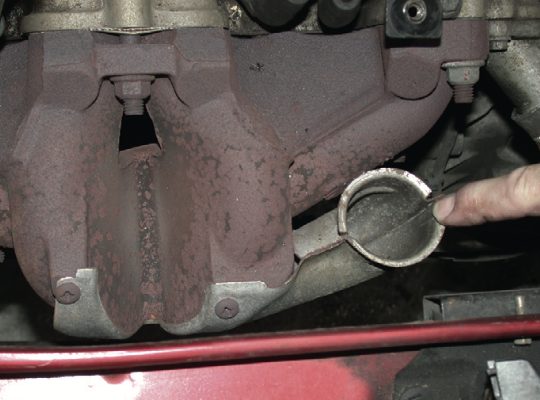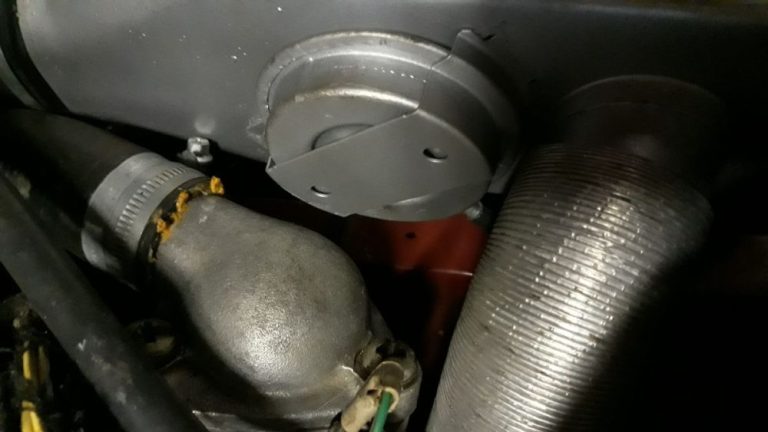When it comes to engines, heat management is a crucial aspect to consider. One way to address the problem of excess heat is to use an exhaust manifold. The exhaust manifold is designed to collect exhaust gases from each engine cylinder and route them to the exhaust system. However, the exhaust gases carry a significant amount of heat, and it can be used to improve engine efficiency. In this blog, we will discuss the concept of pick-up for hot air on an exhaust manifold.
Pick-up for hot air refers to the process of collecting hot air from the exhaust manifold and using it to improve engine performance. The idea is to route the hot air to the engine’s intake system, which can provide a few benefits.
First, the hot air can increase the engine’s combustion efficiency. When the air is hot, it expands, which means more air molecules enter the engine’s combustion chamber. This results in more complete combustion of the fuel, which can improve engine power and fuel efficiency.
Second, hot air can help to reduce emissions. When the engine’s combustion efficiency improves, it produces fewer emissions. This is because more of the fuel is burned, and less is released as unburned hydrocarbons, carbon monoxide, and other pollutants.
So, how can we pick-up hot air from the exhaust manifold? One way is to use an exhaust heat exchanger. An exhaust heat exchanger is a device that uses the heat from the exhaust gases to warm the engine’s intake air. The device is placed in the engine’s intake system, usually between the air filter and the throttle body. The hot air from the exhaust manifold is routed through the heat exchanger, which warms the intake air.
Another way to pick-up hot air is to use a thermal reactor. A thermal reactor is a device that heats the air in the engine’s intake system using the heat from the exhaust gases. Unlike an exhaust heat exchanger, a thermal reactor is placed in the exhaust system, usually near the exhaust manifold. The device uses a series of baffles to direct the exhaust gases through a chamber that heats the air in the engine’s intake system.

It’s worth noting that picking up hot air from the exhaust manifold isn’t always beneficial. If the air is too hot, it can cause detonation, which can damage the engine. Detonation occurs when the air-fuel mixture ignites before the spark plug fires. This can cause a knocking or pinging sound, and if it continues, it can damage the engine.
In conclusion, pick-up for hot air on an exhaust manifold can be an effective way to improve engine performance and reduce emissions. However, it’s essential to use the right equipment and ensure that the air isn’t too hot to prevent engine damage. If you’re considering installing an exhaust heat exchanger or thermal reactor, consult a professional mechanic or engine tuner to ensure that it’s safe and effective for your specific engine setup.
As I mentioned earlier, hot air can be beneficial for engine performance, but only up to a certain point. If the air is too hot, it can cause detonation or pre-ignition, which can damage the engine.
Detonation occurs when the air-fuel mixture ignites before the spark plug fires. This can cause a knocking or pinging sound, and if it continues, it can damage the engine. Pre-ignition is similar but occurs when the air-fuel mixture ignites before the spark plug fires due to an external source of heat, such as hot spots in the combustion chamber.
To prevent detonation and pre-ignition, it’s important to monitor the air intake temperature and make adjustments as needed. One way to do this is to install a sensor in the air intake system that measures the air temperature. This sensor can then send a signal to the engine control unit (ECU), which can adjust the fuel injection and ignition timing to prevent detonation.
Another consideration when using hot air pick-up is the impact on the engine’s overall air-fuel ratio. The air-fuel ratio is the ratio of air to fuel in the combustion chamber. If the air is too hot, it can cause the engine to run lean, which means there is more air than fuel in the combustion chamber. This can cause the engine to run hot and can lead to engine damage over time.
To prevent this, it’s important to ensure that the air-fuel ratio remains within the optimal range. This can be achieved by adjusting the fuel injection and ignition timing, as well as by monitoring the engine’s oxygen sensors to ensure that the air-fuel ratio remains within the desired range.
Overall, pick-up for hot air on an exhaust manifold can be an effective way to improve engine performance and reduce emissions. However, it’s important to take the necessary precautions to ensure that the air is not too hot and that the engine remains within the optimal air-fuel ratio range. Consulting with a professional mechanic or engine tuner is recommended to ensure that the hot air pick-up system is safe and effective for your specific engine setup.
Advantages of pick-up for hot air on an exhaust manifold:
- Improved Engine Performance: The hot air picked up from the exhaust manifold can improve the engine’s combustion efficiency, resulting in more complete combustion of fuel and improved engine power and fuel efficiency.
- Reduced Emissions: When the engine’s combustion efficiency improves, it produces fewer emissions. Picking up hot air from the exhaust manifold can help to reduce emissions by improving the engine’s combustion efficiency.
- Cost-Effective: Compared to other methods of improving engine performance and emissions, such as turbocharging or adding additional components to the engine, hot air pick-up systems can be relatively cost-effective.
Disadvantages of pick-up for hot air on an exhaust manifold:
- Risk of Engine Damage: If the hot air is too hot, it can cause detonation or pre-ignition, which can damage the engine. It’s important to monitor the air intake temperature and take precautions to ensure that the air is not too hot.
- Impact on Air-Fuel Ratio: Hot air pick-up can impact the engine’s overall air-fuel ratio. If the air is too hot, it can cause the engine to run lean, which can lead to engine damage over time. It’s important to monitor the air-fuel ratio and make adjustments as needed.
- Limited Benefits: The benefits of hot air pick-up may be limited in certain engine configurations or setups. For example, engines with a high-performance air intake system may not benefit as much from hot air pick-up as engines with a less efficient air intake system.
In conclusion, while pick-up for hot air on an exhaust manifold can provide some benefits for engine performance and emissions, it’s important to take the necessary precautions and consider the potential disadvantages. Consulting with a professional mechanic or engine tuner is recommended to ensure that the hot air pick-up system is safe and effective for your specific engine setup.










